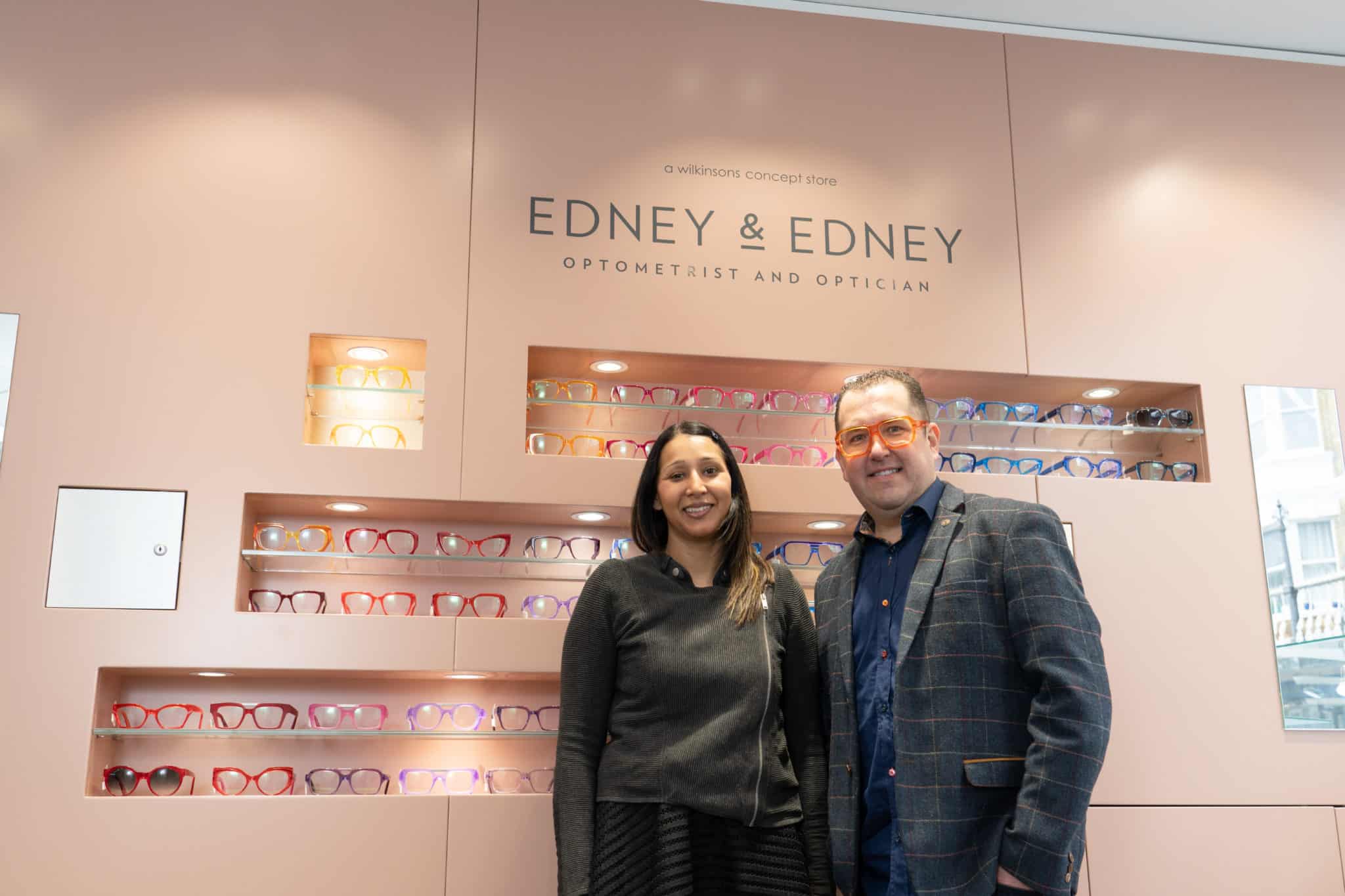This month, optician Jamie Edney – who runs designer eyewear boutique Edney & Edney with his optometrist wife Ayshah on Monson Road – looks at the amazing eye examination technology of optical coherence tomography…
In this article, I’m going to take a break from discussing the intricacies of eyewear fashion trends, and instead provide a brief understanding of a technology that has quietly revolutionised the way we conduct eye examinations all over the world – optical coherence tomography, or OCT.
OCT is an imaging technique which has accelerated diagnostic ophthalmology and optometry since its advent in the 1990s and popularisation in the early 2000s. OCT essentially provides a cross-sectional scan of the ocular structures by emitting light, which passes through the transparent media of the eye. Data collected from the light reflected or scattered back is subsequently processed and presented as an image for interpretation (a similar principle to ultrasonography, which uses sound waves instead of light). It produces incredibly high-quality images compared to alternative imaging techniques like ultrasound and X-rays, and enables the clinician to evaluate a previously inaccessible perspective of the eyes.
Since OCT uses waves of visible light for imaging, there is no harmful radiation and having the scan is completely non-invasive, and can be done as part of the eye examination without the need for any eye drops in most cases. There are two categories of OCT used nowadays – spectral domain and swept source – the latter being the more advanced, which produces higher-quality images.
The two-dimensional cross-sectional images, or ‘B scans’, can be compiled to form a comprehensive three-dimensional digital model of the scanned retina. These scans are invaluable in the earliest possible detection of the subtle structural changes associated with ocular diseases including glaucoma and macular degeneration.
OCT is not only useful in the initial detection of a disease, but also in assessing the progression of a disease and therefore how effective specific treatments may be. By repeating scans periodically, a timeline of progression is produced, facilitating more thorough monitoring of certain conditions within optometric practice, reducing the burden on NHS ophthalmology clinics.
OCT has been available in many independent optical practices for the past fifteen years or so. Therefore when Ayshah, and I opened Edney & Edney in 2017, we invested in one of the highest specification models on day one. Our Topcon Triton swept source OCT captures a huge amount of data in a scan which takes seconds to complete.
There are so many advantages to offering OCT in our practice, and it would be fair to discuss the drawbacks – if there were any! If your optician has made this investment, my advice is to make the most of this advanced technology – the value of OCT as an imaging tool is astounding, and the fact it is available to the public in high street practices and not solely just on Harley Street should be celebrated and made the most of. The relatively cheap scan will provide the most thorough assessment of ocular health and with the way we now transfer and receive information visually, maintaining the best sight possible is arguably more important than ever before.
Ask your optician about supplementary investigation techniques and their recommendations, and as always, feel free to contact us or pop into the practice on Monson Road if you would like more information.
GET IN CONTACT:








